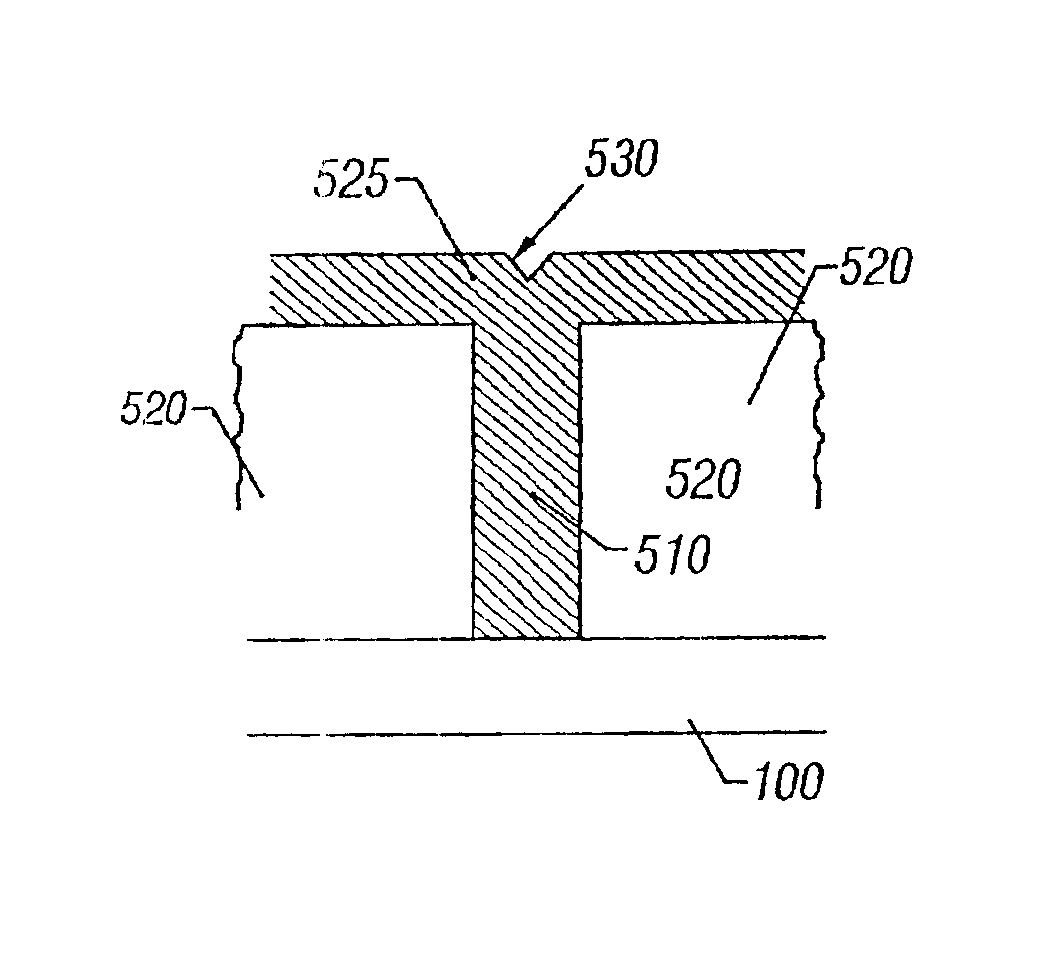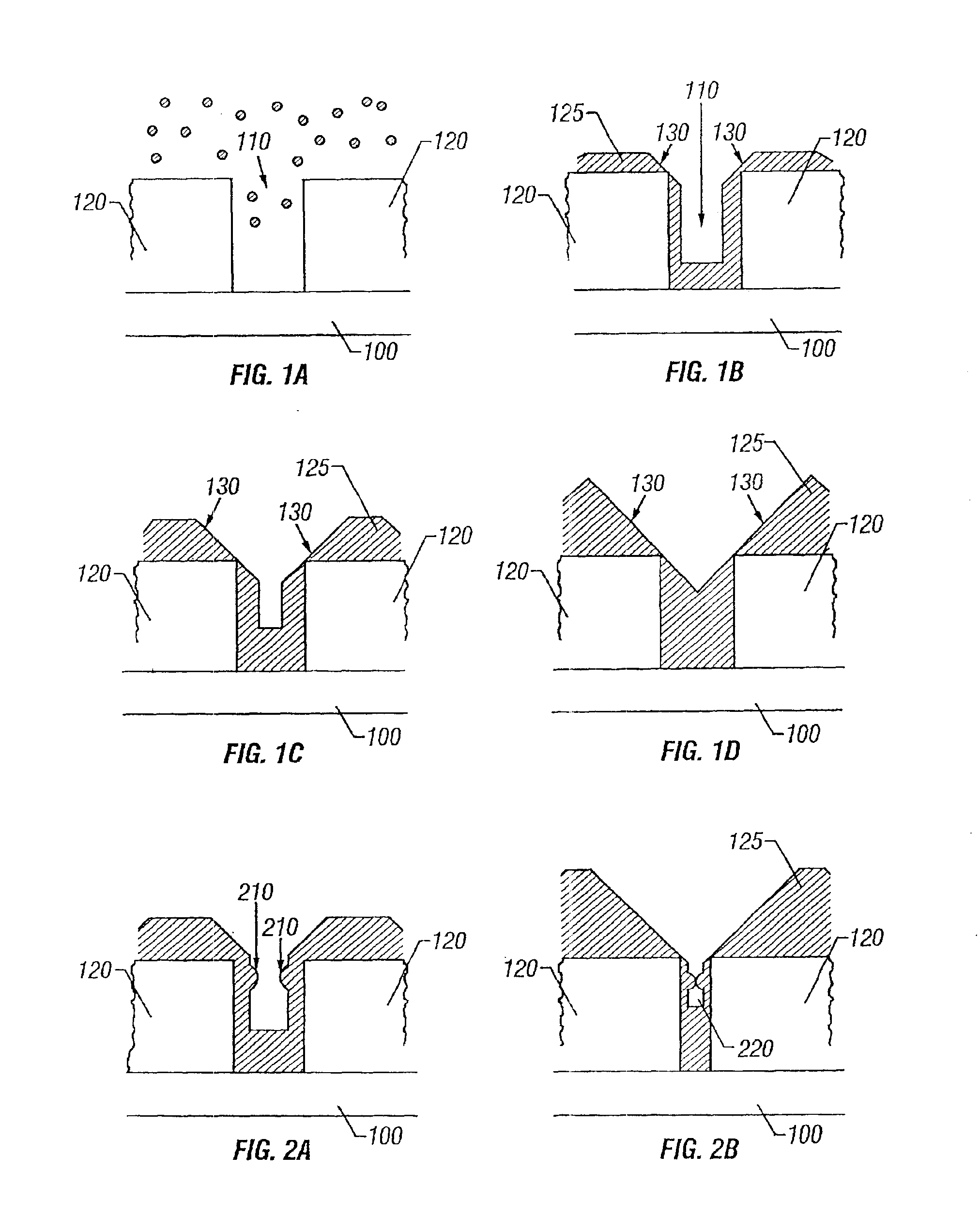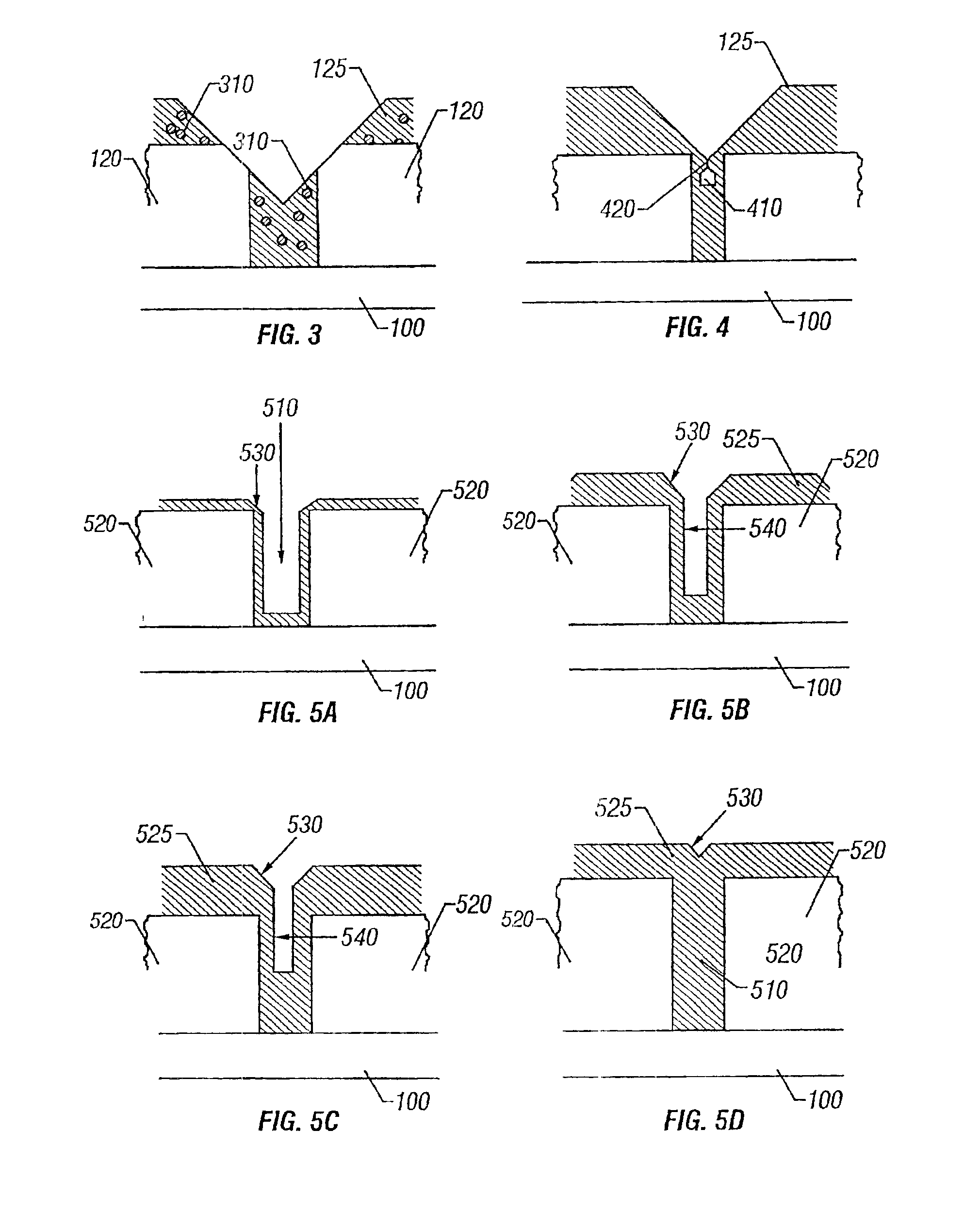Process for depositing F-doped silica glass in high aspect ratio structures
a technology of fdoped silica glass and high aspect ratio, which is applied in the direction of vacuum evaporation coating, coating, plasma technique, etc., can solve the problems of increasing the signal propagation time through, adversely affecting circuit performance, and increasing the density of circuit elements and dimensions on wafers or silicon substrates, so as to reduce reducing sputtering components, and reducing the effect of sputtering
- Summary
- Abstract
- Description
- Claims
- Application Information
AI Technical Summary
Benefits of technology
Problems solved by technology
Method used
Image
Examples
Embodiment Construction
In accordance with an embodiment of the present invention, a process using high density plasma (HDP) deposition with helium, hydrogen, or other inefficient inert sputtering gases, is provided, which allows high aspect ratio gaps to be filled using fluorine-doped films without voids or clipped corners associated with conventional methods. In other embodiments, the gas mixture includes both helium and hydrogen.
Similar to conventional HDP deposition processes, a gas mixture is used containing silane (SiH4), a fluorine-bearing precursor, and oxygen (O2). However, contrary to conventional HDP processes, argon (Ar) is not used; rather an inefficient sputtering gas with an atomic weight lower than Ar is used, such as helium (He), hydrogen (H2), and / or neon (Ne). A mixture that includes SiH4, O2, a fluorine-bearing precursor, and hydrogen and / or He is used to simultaneously deposit and etch dielectric material, where SiH4, O2, and the fluorine-bearing precursor are used to form SiO2 for the...
PUM
| Property | Measurement | Unit |
|---|---|---|
| frequency | aaaaa | aaaaa |
| frequency | aaaaa | aaaaa |
| dielectric constant | aaaaa | aaaaa |
Abstract
Description
Claims
Application Information
 Login to View More
Login to View More - R&D
- Intellectual Property
- Life Sciences
- Materials
- Tech Scout
- Unparalleled Data Quality
- Higher Quality Content
- 60% Fewer Hallucinations
Browse by: Latest US Patents, China's latest patents, Technical Efficacy Thesaurus, Application Domain, Technology Topic, Popular Technical Reports.
© 2025 PatSnap. All rights reserved.Legal|Privacy policy|Modern Slavery Act Transparency Statement|Sitemap|About US| Contact US: help@patsnap.com



